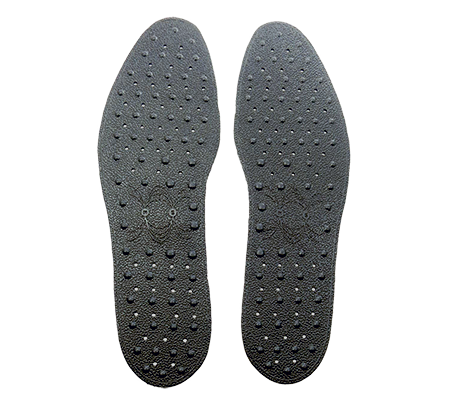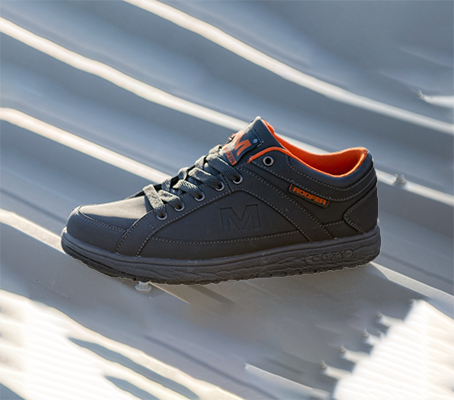Magnetic Insoles NOT Effective
In a 2005 Mayo Clinic Proceedings publication, magnetic insoles did not effectively relieve foot pain among patients in the study. The results would indicate that patients who strongly believed in magnets felt as though they experienced pain relief including those participants who were given shoes with false magnets.
According to Mark Winemiller, M.D., the lead author of the study and a Mayo Clinic physician, the study provides convincing evidence that use of the ‘static magnets’ was ineffective in relieving symptoms of non-specific foot pain in the workplace.
Generally speaking, adults suffering from foot pain are likely to initiate self-treatment with magnets based on personal recommendations, belief systems, or even ads on the internet, often without a specific diagnosis or medical consultation. The goal of the study was to determine whether magnetic insoles work in the way they are ‘typically used’. The double-blind study, was randomized and designed to minimize bias and maximize the validity of results.
An interesting result in the study relates to the “placebo effect.” Patients in studies who are given a placebo or false treatment often report improvement in their conditions based on a belief that they are receiving a treatment designed to provide relief. A moderate placebo effect was noted in participants who had the strongest belief in the potential of magnets to reduce foot pain.
Placebo Magnet Therapy
The test shoes had both additional cushioning as well as magnets while the placebo shoes looked the same and only had cushioning and some additional weight to ‘feel’ like they had magnets in them. The results between the magnetic and non-magnetic insoles provided nearly identical pain relief for the test subjects which could be interpreted as having been the cushioning that was providing pain relief, and not the idea that the shoes had magnets. On the other hand, the belief held by the subjects that there were magnets in the shoes, and that said magnets were providing pain relief could have also played a part. The human mind is a very powerful thing and a person’s desire to hold some ideal as being real and valid can make almost anything seem the way you want it be.
Despite almost no scientific evidence, and a lack of FDA (Food and Drug Administration) approval for using magnets for pain relief, many people have purchased magnets based on ‘reported’ pain relief. Estimates reflect that worldwide sales have reached approximately $5 billion, with an estimated $500 million in the United States annually on magnetic, pain-relieving devices. In the past 10 years, the use of magnets for pain relief has increased substantially even without any creditable proof that they actually reduce pain.


Artificial Limbs
Prosthetic Legs or Arms; Prostheses can help people with leg and/or arm amputations get around more easily. Prosthetic Devices mimic the function and, sometimes, even the appearance of a real body parts. Some people may require a cane, walker, or crutches to increase stability while walking, while others can walk, and even run without encumbrance.
Clinical Magnets
Medical magnetic devices use either static or pulsed magnets. Clinically, pulsed magnets have been shown effective for treating delayed fracture healing, and for reducing pain in various musculoskeletal conditions. They have also been used for decreasing edema associated with acute trauma, although other studies have shown no benefit in these situations. Externally applied static magnets are generally considered to be safe and have few adverse effects, but little is known about their mechanism of action. Most basic scientific research has focused on movement of tiny electrical voltages altered by the magnetic force that may lead to decreased pain. The insoles studied were the Active Comfort magnetic insole (Spenco Medical Corp.), which has a magnetic foil pad, located under the arch of the foot. These insoles were chosen because they are comfortably cushioned but do not have rigid arch support or acupressure features, which potentially could confound results if such features provided an independent effect. The special set of false magnetic insoles were also produced by the Spenco, using a non-magnetized metal foil embedded identically in the foam insole material.
The magnet study was funded by an unrestricted educational grant from the Spenco Medical Corp, Waco, Texas. Spenco was not involved in any way in the study design, data collection, data analyses, or data interpretation or in manuscript preparation, review or approval. Both the active and false magnetic insoles were provided at no charge directly from the manufacturer. None of the authors have any affiliations or financial involvement with any organization or entity with a financial interest in the subject matter discussed in this article. Placebo controls are extremely valuable for determining the efficacy of pain intervention testing as well as other drugs and procedures.
Adapted from an article on sciencedaily-dot-com